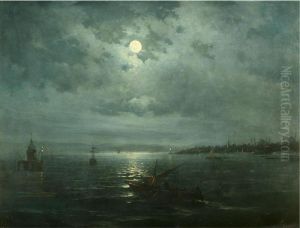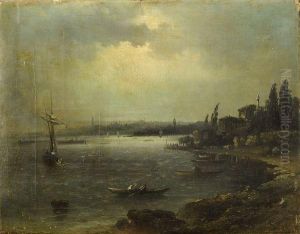Migirdic Givanian Paintings
Migirdic Givanian, also known as Meguerditch Givanian, was an Armenian painter born in 1848 in Kayseri (Gesaria), Ottoman Empire. Givanian's artistic journey began in his hometown, but his talent and ambition would soon take him far beyond the confines of Kayseri. In pursuit of artistic excellence, Givanian moved to Constantinople (now Istanbul), where he became part of a vibrant community of Armenian artists. This period was crucial for the development of his skills and the formation of his unique style, which blended traditional Armenian themes with the techniques and sensibilities of European art.
Givanian is best known for his landscapes and urban scenes, particularly those depicting Constantinople and Venice. His work is characterized by a keen attention to detail, vibrant colors, and a remarkable ability to capture the interplay of light and shadow, which brings his scenes to life. Givanian's paintings of Venice, with their intricate play of light on water, stand out as some of his most accomplished works, showcasing his mastery of color and composition.
In addition to his landscapes, Givanian also painted religious subjects, reflecting his deep connection to his Armenian heritage and the Christian faith. These works often feature iconic Armenian architectural and religious landmarks, imbued with a sense of spirituality and reverence.
Givanian's contribution to Armenian art is significant. He was part of a generation of Armenian artists who were instrumental in the development of a distinct Armenian artistic identity in the late 19th and early 20th centuries. Through his art, Givanian celebrated the beauty of the Armenian landscape and cultural heritage, while also embracing and contributing to the broader currents of European art.
Migirdic Givanian's life and career were cut short when he passed away in 1906. Despite his relatively short life, his work left a lasting impact on Armenian art, inspiring future generations of Armenian artists. Today, his paintings are cherished for their beauty and historical value, providing a window into the rich cultural tapestry of Armenia and the Ottoman Empire during a period of profound change and challenge.




